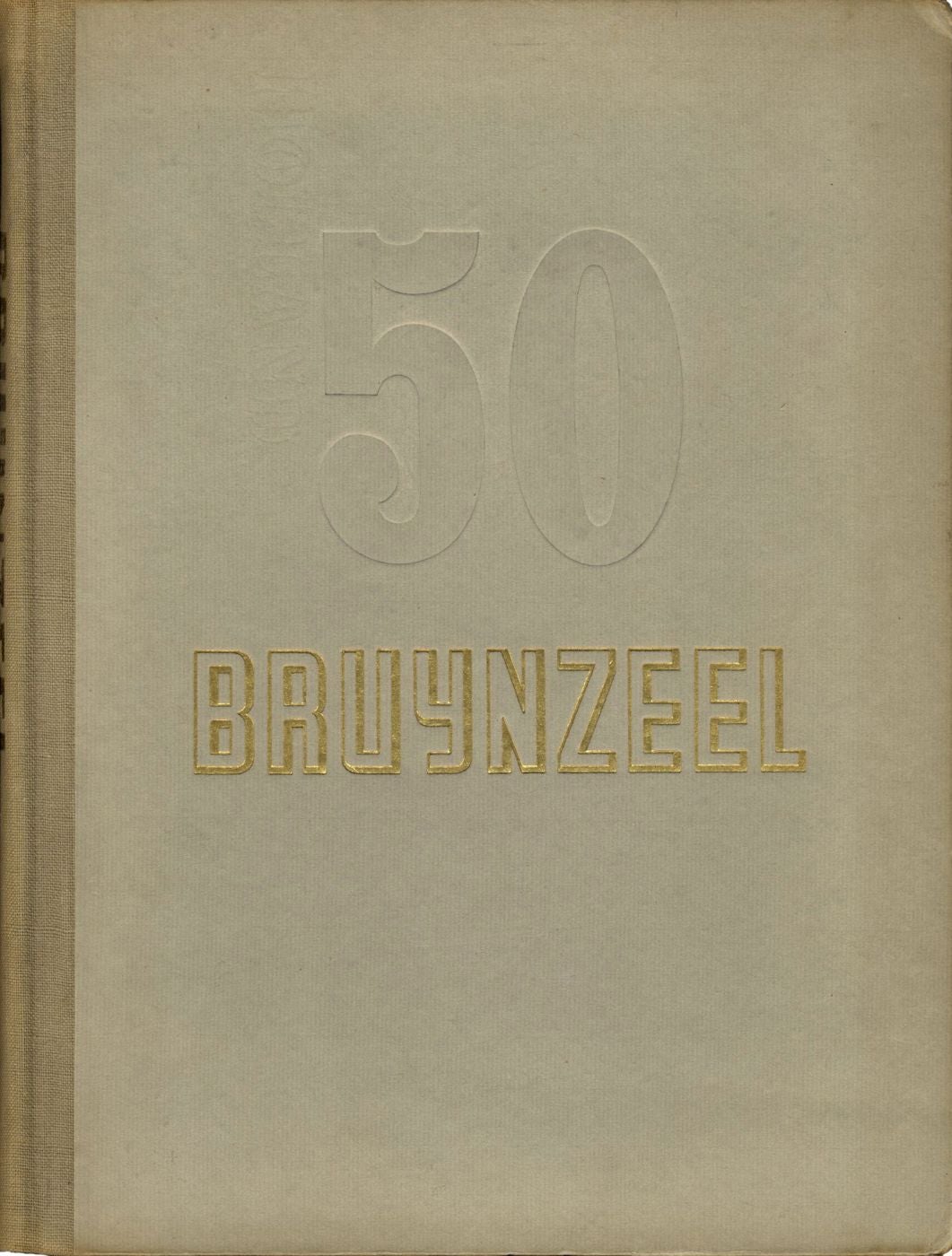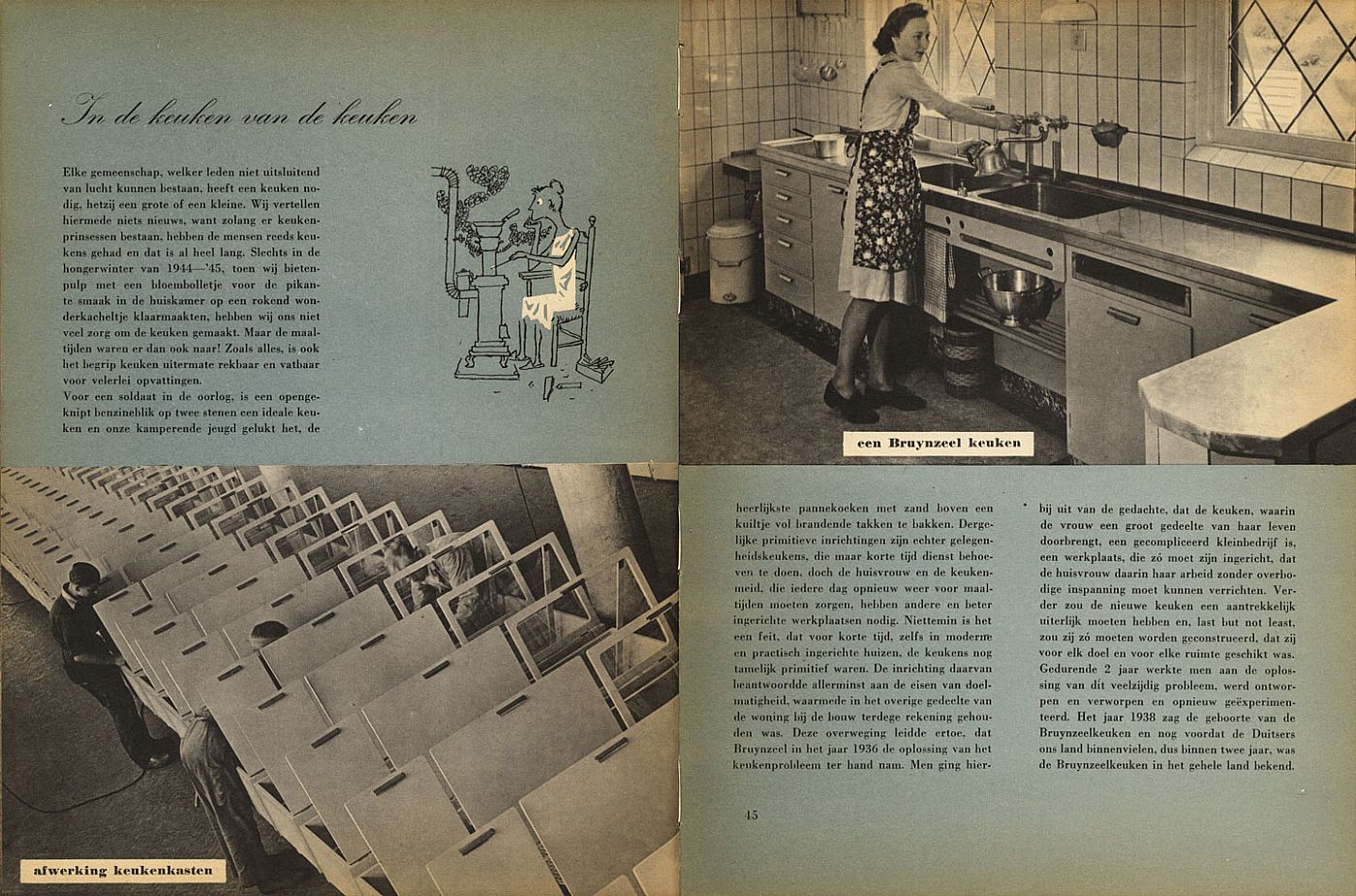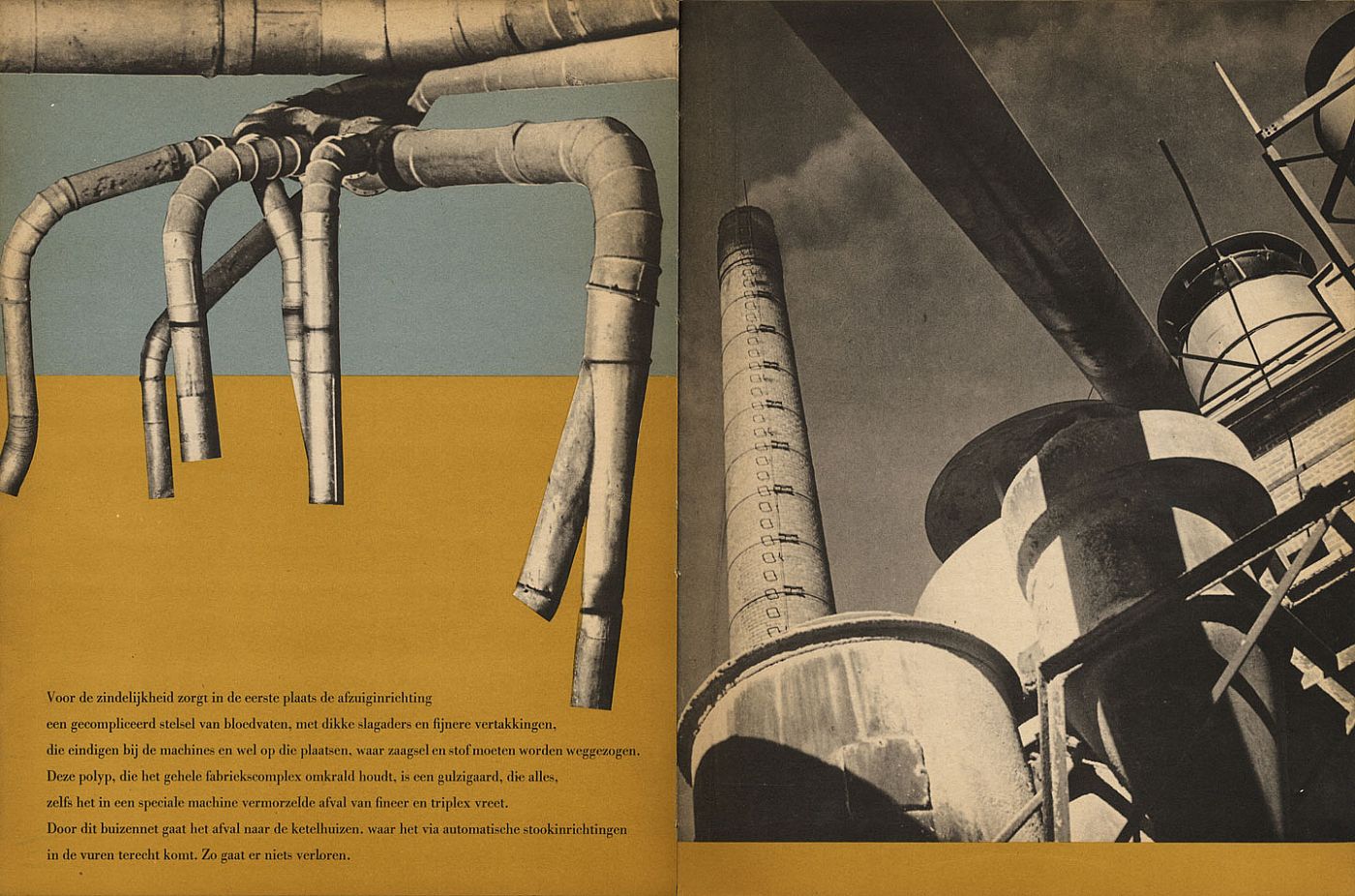50 Jaar Bruynzeel (50 Years of Bruynzeel) 1897-1947 (Thijsen Corporate Photography)
Publisher: Zaandam, Holland: Bruynzeel, 1947
Edition: 1st Edition
Binding: Hardcover
Condition: Very Good / No dust jacket as issued
Item #: 102617
$650.00
Specifics
First edition, first printing. Hardcover. Gray paper-covered boards with "50" debossed on cover and "Bruynzeel" stamped in gold on cover and cloth-covered spine; no dust jacket. Photographs by Carel Blazer. Text (in Dutch) by Martin Redeke. Designed by Jan Bons and Jaap Penraat. 128 pp., with 156 black and white illustrations and 25 black and white illustrations with spot colors. 12-5/8 x 9-3/4 inches.
[Cited in Martin Parr and Gerry Badger, The Photobook: A History, Volume II. (London and New York: Phaidon, 2006).] Out of print. Very scarce.
Condition
Very Good (spine cocked, some wear and aging to the extremities of the covers; except for some foxing on the first several pages, the pages and plates are in Fine condition); missing dust jacket.
Description
From The Photobook, Volume II, by Martin Parr and Gerry Badger: "Almost as much as the Soviet propaganda books of the 1930s, postwar Dutch photobooks were total products. That is to say, the photographers were often just part of a larger team that included writers and graphic designers, with no single element having prominence over another....This was particularly true of company books in the 1950s and 1960s, but the trend was apparent even by the late 1940s, as seen in this fine early example of the way Dutch graphic designers eagerly grasped the opportunities that had been cut short by World War II.
The photographer for 50 Jaar Bruynzeel was Carel Blazer, a leading light in the 'Underground Camera' and the radical GKf Group of documentary photographers. As such, and as a member of the Dutch Communist Party, his involvement in the production of a commercial company book may seem contradictory, but apart from the obvious reason of making a living, reconstruction was the main priority in postwar Holland, and as Bruynzeel was a timber and building products company, commerce and communism had overriding motives in common. Blazer's pictures are stolidly conventional in any case; the book's radicalism lies in its design, and the way in which the images are incorporated into the total graphic package....As is typical of many company books of the period, [this book's] ideological message presents man and machine as two aspects of a single entity. The complicated services and communications systems of the factory are compared to the human body with its arterial and neurological systems. In a famous double-page spread, ducting and pipes look like arteries or nerves, either feeding or cleaning the body corporate." (Martin Parr & Gerry Badger)




